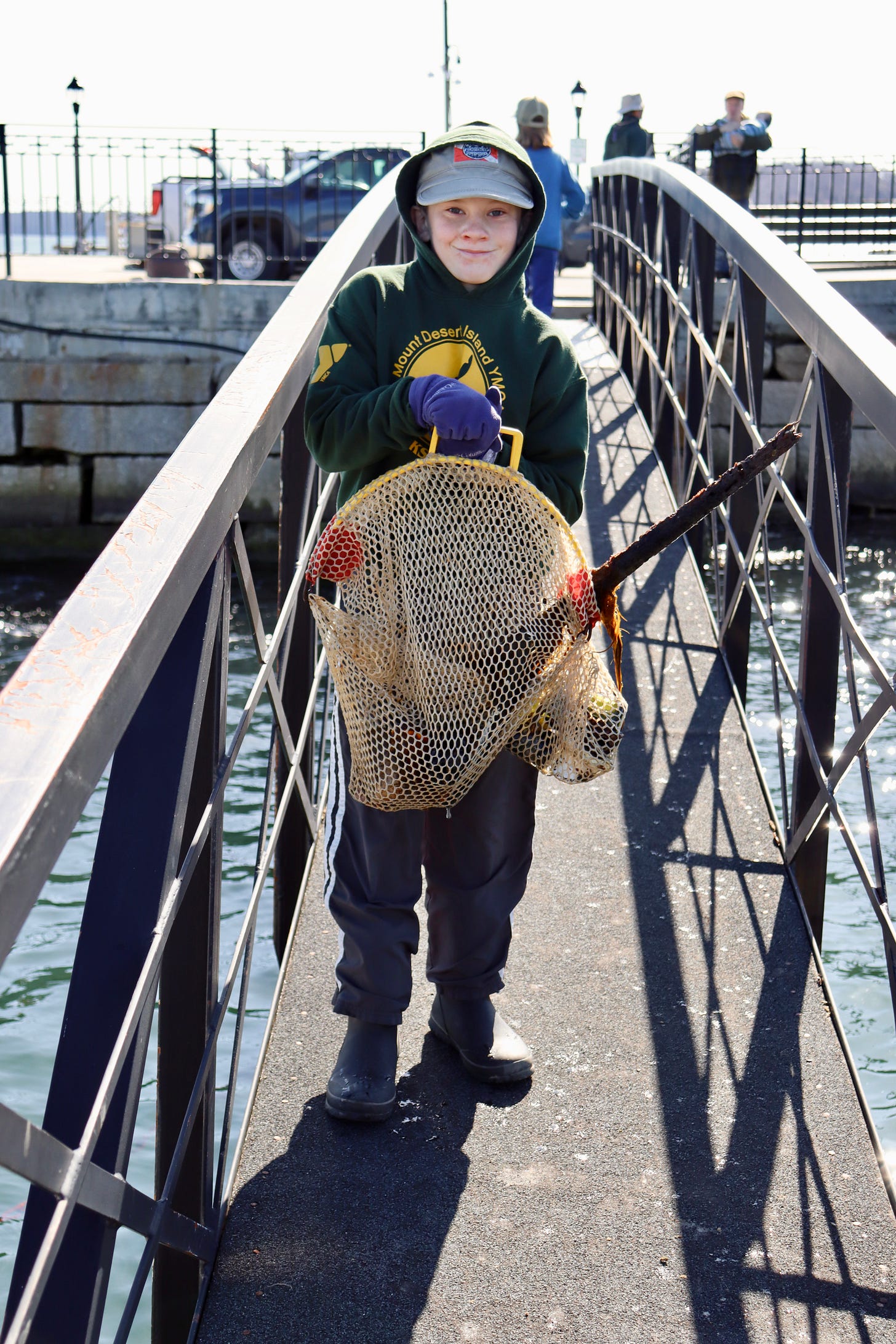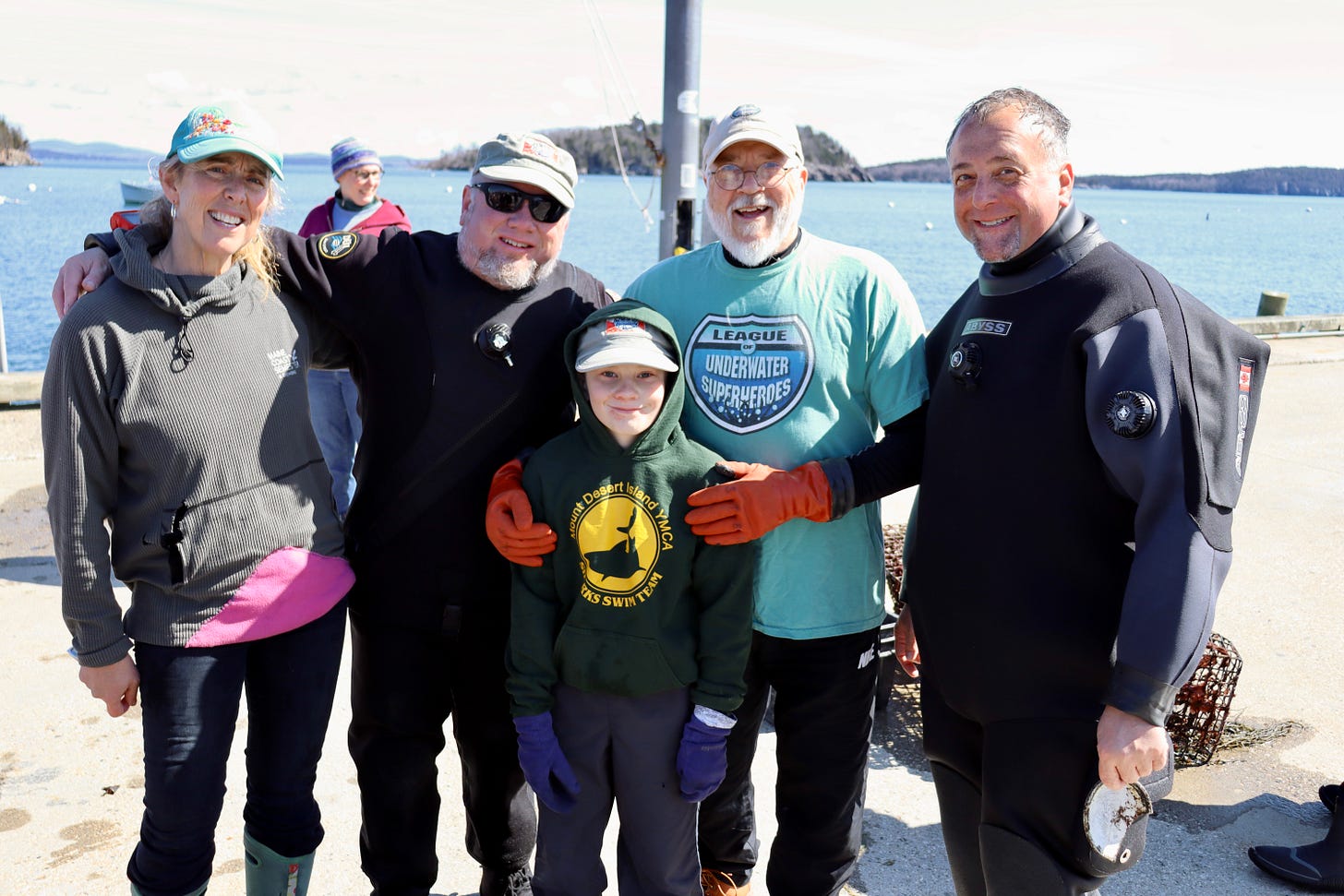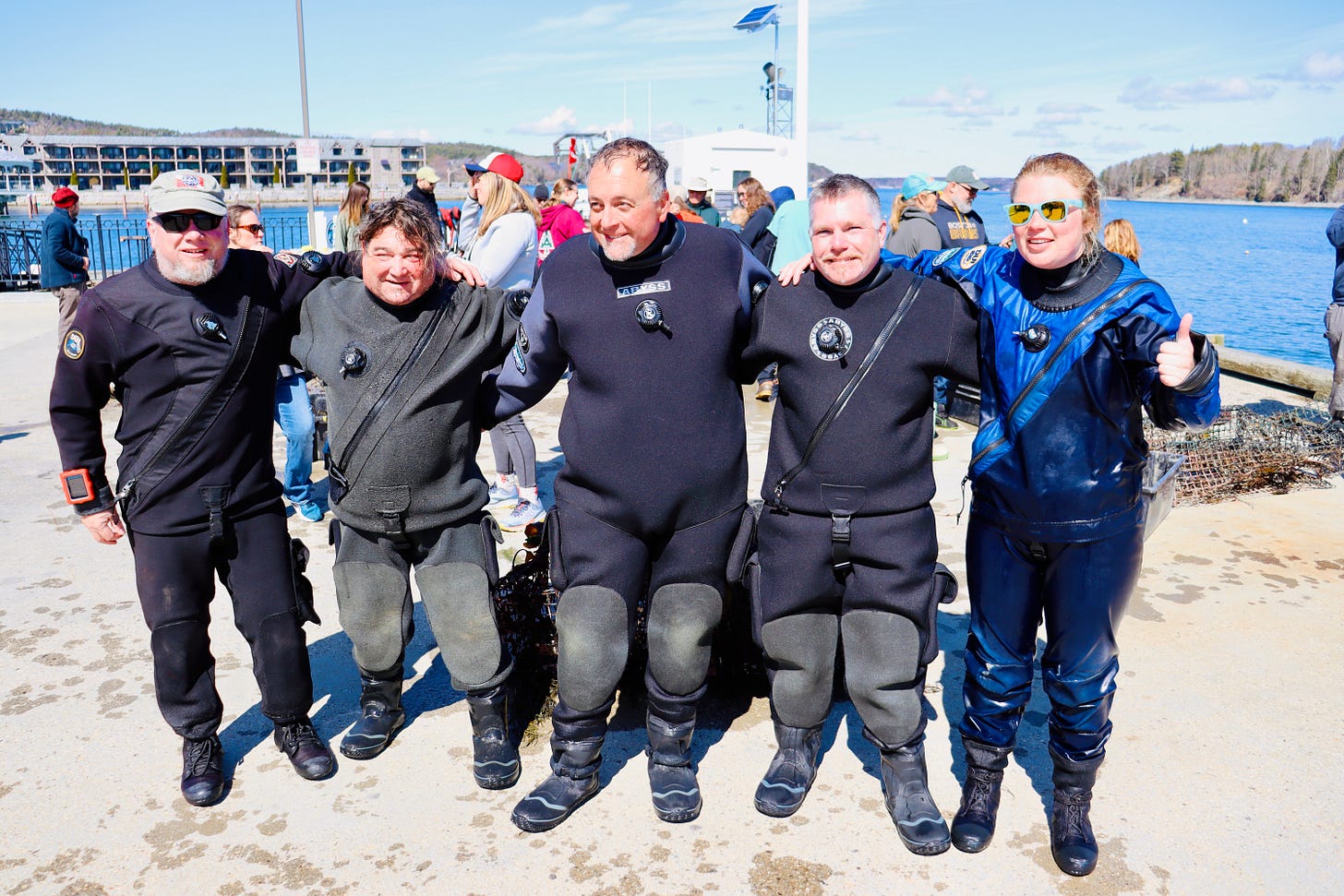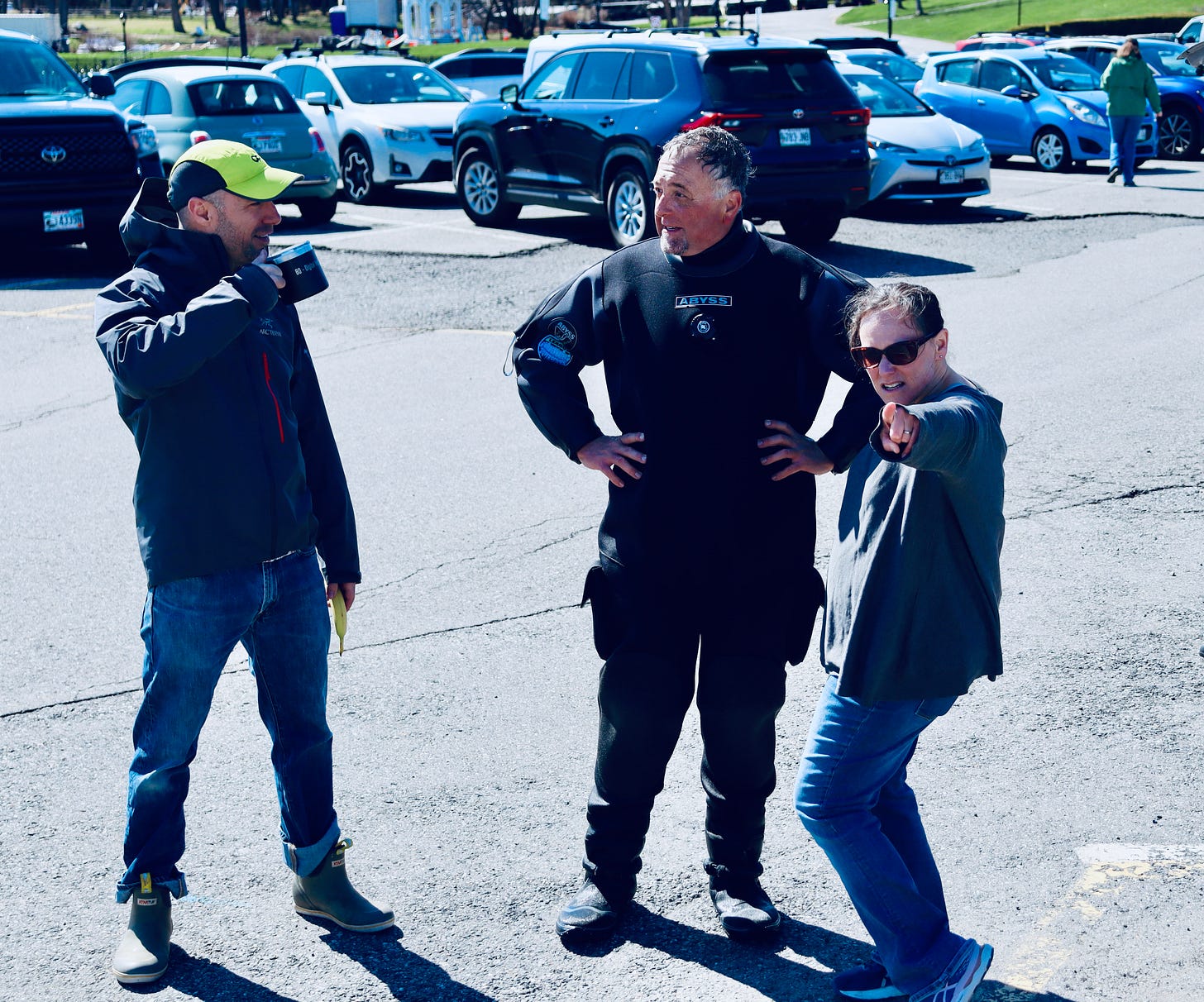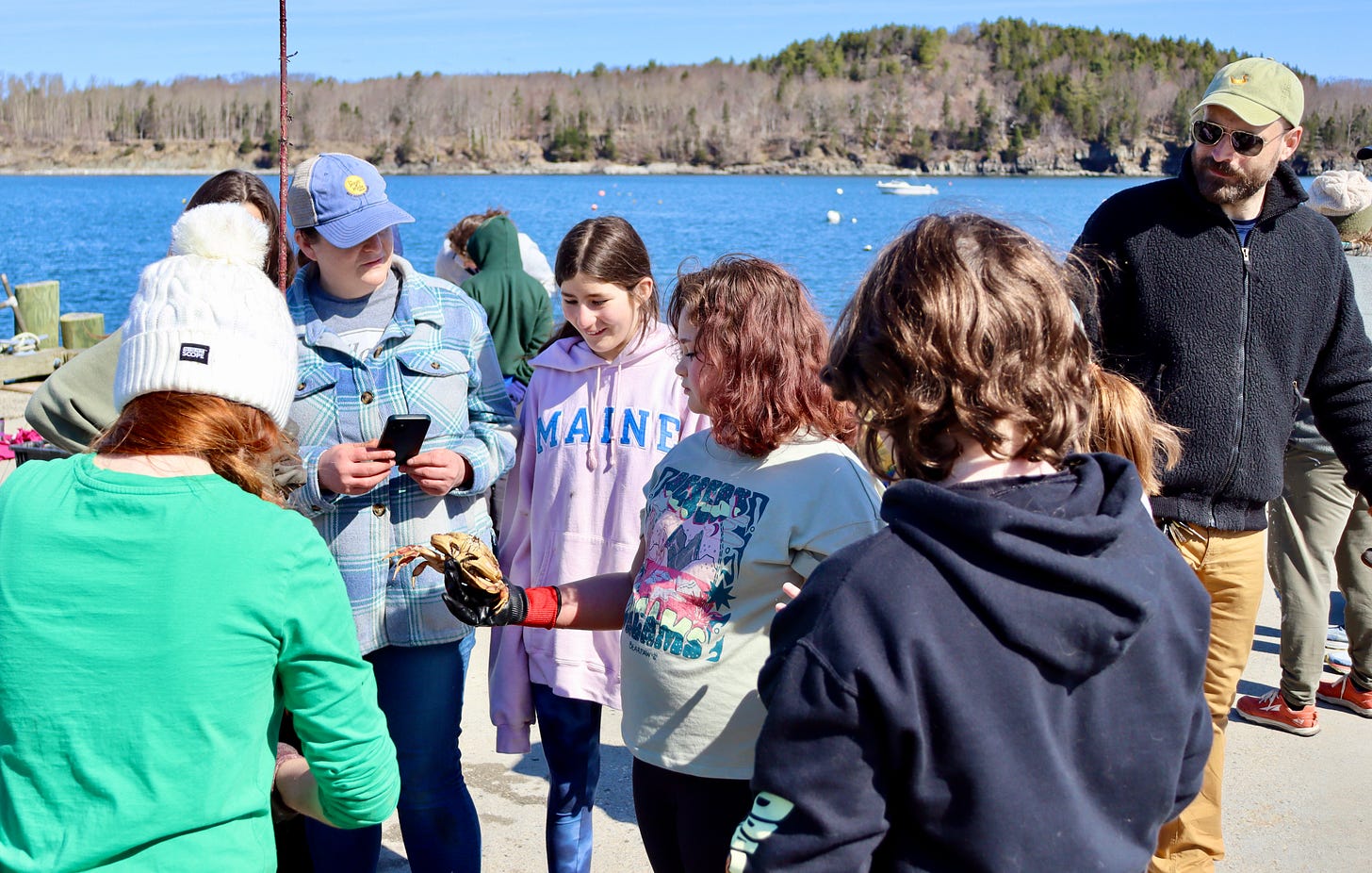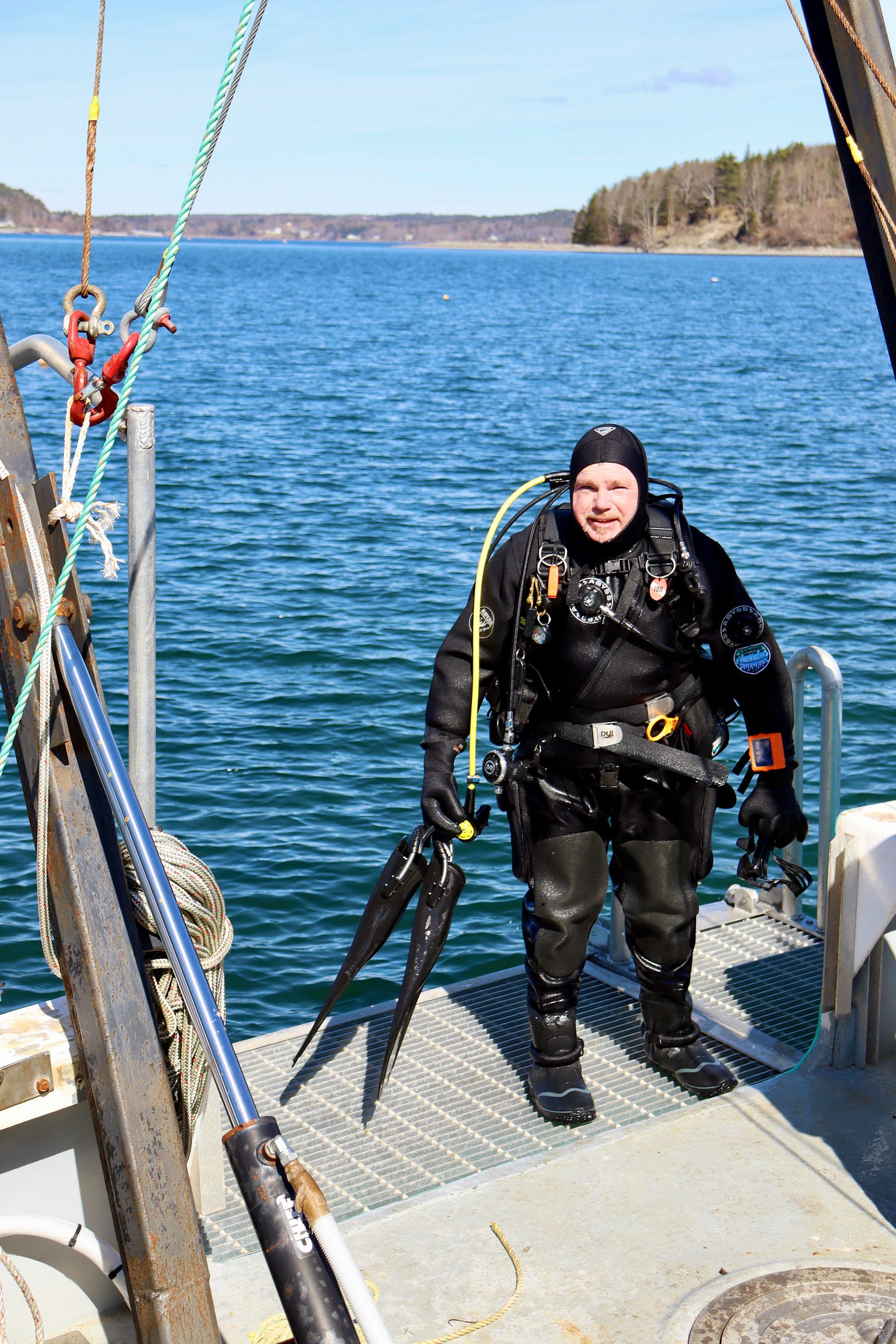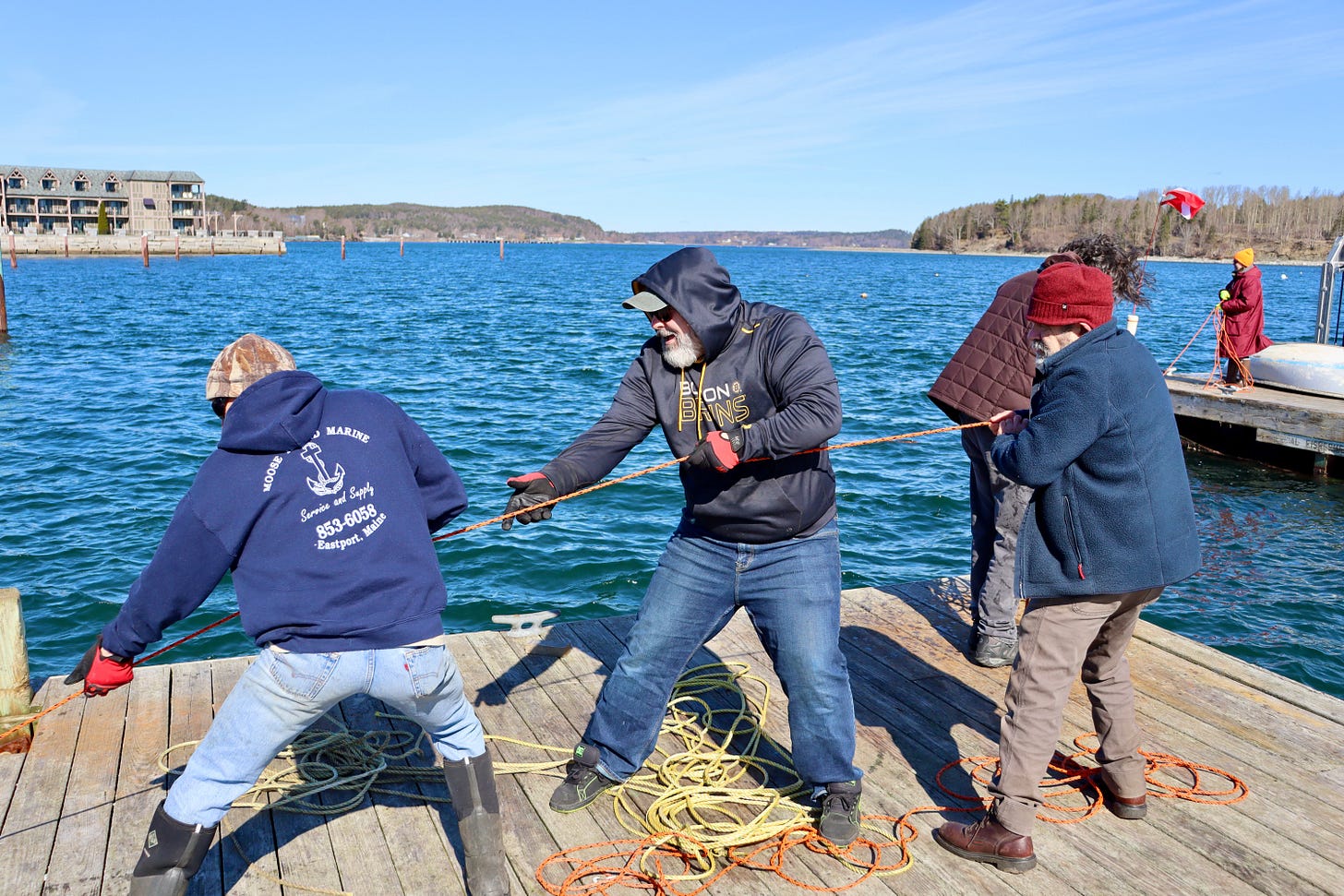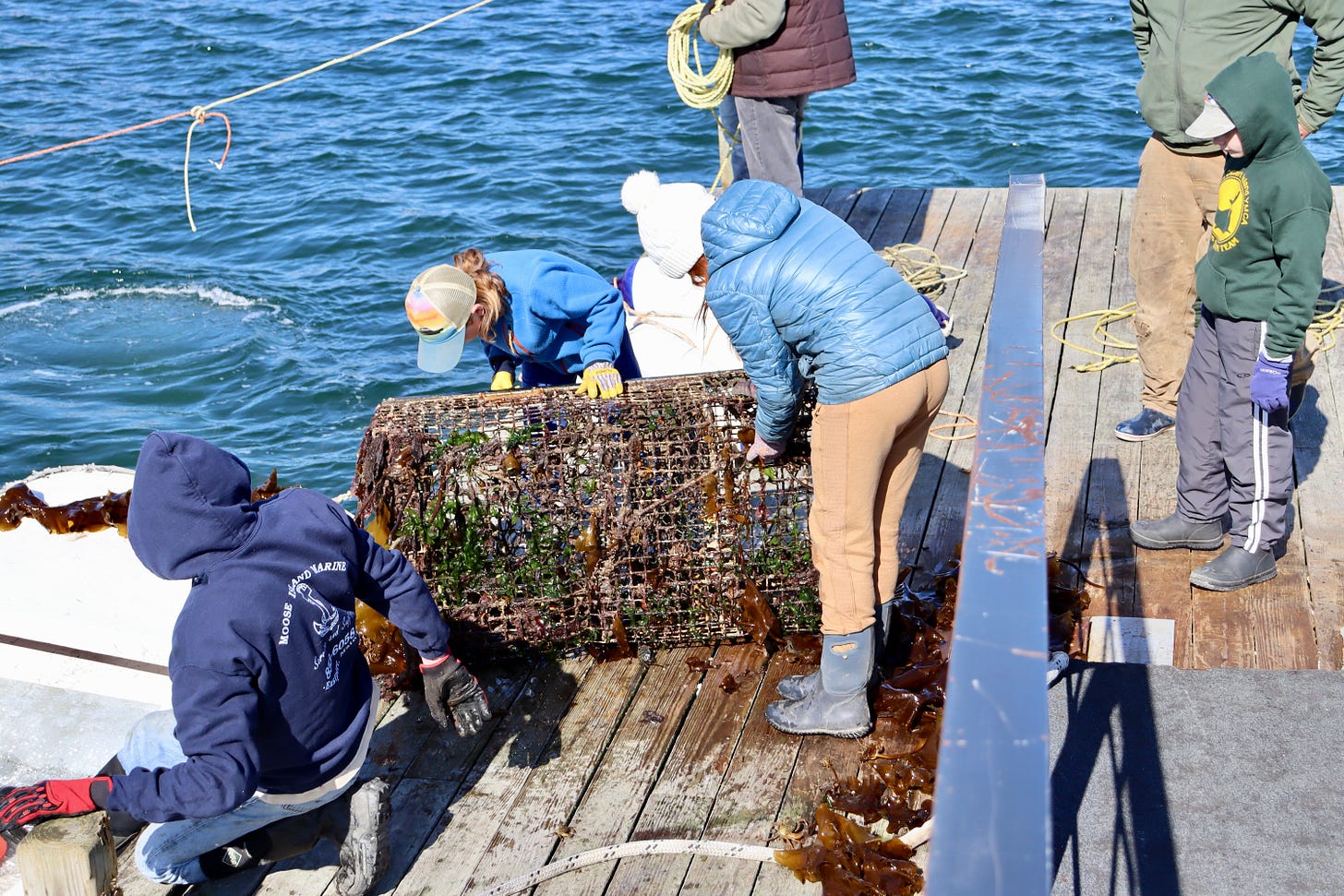The League of Underwater Superheroes Tackles Ell's Pier
Annual Almost Earth Day Event Focuses on Water Debris
BAR HARBOR—The divers pulled out trash and debris, dive bag and giant chunk at a time. On the fisherman’s pad, kids and on-shore helpers documented every lobster trap, every piece of railing, and ogled a massive lobster that was in a trap.
Pretty much every single year for more than twenty years, “Diver Ed” Monat and the League of Underwater Superheroes and some sidekicks and crew have cleaned the ocean’s bottom by Ell’s Pier or Bartlett’s Landing, usually around Earth Day. Monat actually began before that, back when he was Bar Harbor’s harbormaster in 1995.
It sounds like hard work.
It is.
But there’s something joyful about friends and strangers banning together, year after year, to take care of the earth by taking care of its water for at least 90 minutes or so on a Sunday morning. That’s before Bob Collier brought over a dumpster for all the trash that was gathered.
Ben Segee, lead aquarist at the Oceanarium and Education Center said, “I admire that Diver Ed has been able to gather so many community members to take part in this awesome event.”
The power of Monat’s charisma and friendship is a huge part of that gathering, as is the diligent, detail-oriented kindness of his wife, Edna. And though the Monats are a driving force, the heroes gather not just because of their love for the couple, but because of their love for the ocean. This year, a fluctuating crew of all ages, participated, somewhere between 50 and 60 superheroes and sidekicks at any one time.
Marine Patrol Officer Tom Reardon said the cleanup was fantastic. “It keeps the community involved, and gets kids involved in the ocean and sea life. I love this event!”
The divers pulled out abandoned and lost lobster traps that held a massive lobster and other sea life. A decorator crab, Jonah crabs, rock crabs and an ocean pout are all heading to the Oceanarium and Education Center.
The worry is what would happen if the debris like a “bicycle rack” pedestrian gate, an old soap dish, a broken plate, plastic propane tank covers, miscellaneous steel and glass bottles didn’t come out.
“It’s an annual event that always produces treasures to show man’s impact on nature,” Reardon said.
There is actually more plastic than fish in the ocean and most estimates say there are 12 million metric tons dumped into the ocean each year. That’s 100,000 blue whales. National Geographic estimates that there are 5.25 trillion pieces of plastic debris in the ocean.
Sea junk has created five monstrous garbage patches. The Great Pacific Garbage Patch, the largest, holds approximately 1.8 trillion objects. It is twice the size of Texas.
The Superheroes can take out large bits of debris but when it comes to microplastics or road runoff, they can’t. It’s estimated that with every laundry load, over 700,000 synthetic microfibers end up in waterways. “One estimate puts the number of plastic microfibers in the ocean at 4 billion per square kilometer,” according to Conservation.org. Similarly, the site stresses that while oil leaks make headlines, “two to three times as much oil is carried out to sea via runoff from our roads, rivers and drainpipes.”
The National Geographic writes, ”It's not too difficult to surmise why so much plastic ends up in the ocean. The Plastic Disclosure Project, a project run by Hong Kong-based advocacy group Ocean Recovery Alliance, estimates that 33 percent of plastic manufactured worldwide is used once, then discarded. To compound matters, 85 percent of the world's plastic is not recycled.
”Despite the magnitude of the numbers, Peter Ryan, a zoologist at the University of Cape Town, South Africa, who is writing a book tracing the evolution of marine debris research, says the problem can be solved.
"‘Marine debris, unlike global warming, should be an easy thing to deal with,’ he says. ‘We have to sort out what to do with our rubbish.’"
An Environment Maine Research & Policy Center report released last year was co-authored by John Rumpler, who is the clean water director at the center. He explained that when surfaces are paved (roads, parking lots, malls), water has nowhere to seep into the ground. Instead, it “sweeps up” surface pollution and takes it into streams, oceans, and rivers. Or, it can overwhelm wastewater and sewage systems in towns and cities. This pollutes the water.
All photos: Shaun Farrar/Bar Harbor Story
LINKS TO LEARN MORE
Oceanarium and Education Center
If you’d like to donate to help support us, you can, but no pressure! Just click here.










